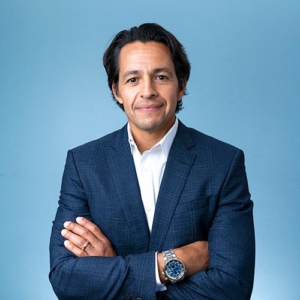Welcome to the Own More Doors Podcast! In this episode, we are thrilled to host Scott Choppin, a renowned builder and real estate developer. Scott shares his journey, business models, and insights on the current real estate market in 2024. With a rich family legacy in real estate development, Scott’s story is both inspiring and educational. Let’s dive into the key takeaways from our conversation with Scott Choppin.
A Legacy in Real Estate
Scott Choppin’s roots in real estate run deep. Born and raised in Long Beach, Scott is a third-generation developer. His grandfather moved to Long Beach in 1949, and his family has been involved in real estate development since 1960. Scott’s uncle built the World Trade Center in downtown Long Beach, and his family has developed several million square feet of commercial office space and numerous apartments throughout Southern California.
Despite his family’s strong real estate background, Scott initially pursued a different path, working in the electrical trades for a few years. However, his passion for real estate was reignited when he began reading real estate books and understanding the business. By the age of 19, Scott knew he wanted to pursue a career in real estate development.
The Birth of Urban Pacific
Scott founded Urban Pacific in 2000, marking the beginning of a successful journey in real estate development. Urban Pacific specializes in workforce housing, with a unique focus on multi-generational, middle-income families. Scott’s innovative approach led to the development of Urban Townhouse (UTH), a five-bedroom, four-bathroom townhouse rental unit designed to cater to the needs of multi-generational families.
The Power of Networking and Social Media
Scott emphasizes the importance of networking and sharing knowledge in the real estate industry. Platforms like Twitter (now X) have become valuable tools for real estate professionals to connect, share deals, and receive feedback. Scott encourages real estate enthusiasts to leverage these platforms for networking and learning.
Differentiating in Real Estate Development
Scott’s approach to real estate development is rooted in differentiation. He believes in creating unique, niche products that stand out in the market. The Urban Townhouse model is a testament to this philosophy. By offering large rental units with multiple bedrooms and bathrooms, Scott addresses the specific needs of multi-generational families, a demographic often overlooked in the housing market.
Challenges and Rewards of Building in California
Building in California comes with its set of challenges, including regulatory hurdles and high construction costs. However, Scott views these challenges as a barrier to entry that creates a competitive advantage for those who can navigate them successfully. He emphasizes the importance of selecting the right locations and being mindful of the economic cycles in real estate development.
Understanding Workforce vs. Affordable Housing
Scott distinguishes between workforce housing and affordable housing. Workforce housing targets middle-income families who earn too much to qualify for government-subsidized housing but cannot afford luxury housing. These families often include multiple income earners and require housing that accommodates their larger household sizes.
The Economics of Multi-Generational Housing
The Urban Townhouse model is designed to be recession-resilient. Multi-generational families practicing economic sharing are more robust in the face of economic downturns. With multiple income earners pooling resources, these families can weather financial challenges better than single-income households.
Scott’s First Development Project in Long Beach
Scott’s first development project under the Urban Townhouse model was located at 325 Daisy Avenue in Long Beach. The project consisted of two four-bedroom, three-bathroom townhouse units. Despite initial doubts about the demand for such a product, the project was a success, paving the way for more developments under the Urban Townhouse model.
The Cost of Building and Market Dynamics
Building costs in California are high, but Scott focuses on the overall economic model. He evaluates projects based on their all-in costs (land, construction, fees) and their market value upon completion. By finding the equilibrium point where the cost to build is justified by the market value, Scott ensures the profitability of his projects.
Final Thoughts
Scott Choppin’s journey in real estate development is a blend of legacy, innovation, and a commitment to sharing knowledge. His unique approach to workforce housing and his ability to navigate the complexities of the California real estate market make him a standout figure in the industry.
Click here to listen to the ‘Own More Doors’ podcast on Spotify, Apple, Amazon, or Pandora.







